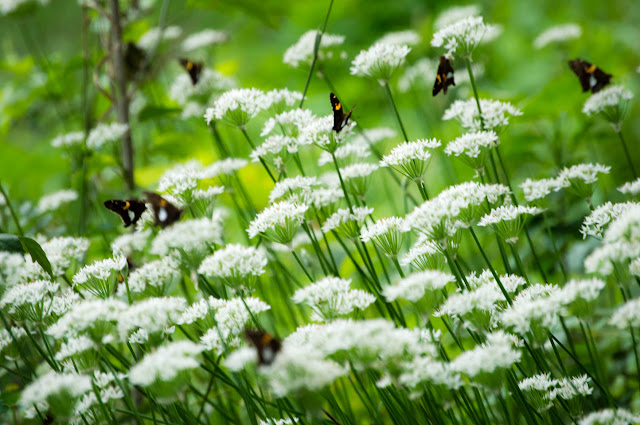Invader of the Woods
Today's invasive species is Garlic Mustard (Alliaria petiolata). This is a plant that I almost did my dissertation research on. It is a major problem in the eastern deciduous forests of North America, where it can overgrow native vegetation. The problem is that it forms these dense stands of garlic mustard that shade out other plants. Garlic mustard is in the Mustard Family (also called the Brassicaceae) but it smells like garlic (hence the name). The species originated in Europe, where it has been used as a pot herb. I knew a person who once tried to sell it at the Farmer's Market.
The species is a winter biennial. Thus the seeds germinate in the fall and the plant overwinters as a rosette of leaves. The second spring after germination, the plant puts up a tall flowering stalk. One interesting thing I have found, and have seen in the literature, is that competition between the juvenile rosettes and the adult plants probably leads to cycling of the population. In one year, the population consists mainly of juveniles and the next year, it consists mainly of adult plants.
The species is a winter biennial. Thus the seeds germinate in the fall and the plant overwinters as a rosette of leaves. The second spring after germination, the plant puts up a tall flowering stalk. One interesting thing I have found, and have seen in the literature, is that competition between the juvenile rosettes and the adult plants probably leads to cycling of the population. In one year, the population consists mainly of juveniles and the next year, it consists mainly of adult plants.


Apparently, in some old British books, it was known as "just sauce" when it was used as a potherb. It's also called jack-of-the-hedge in some parts of Britain.
ReplyDeleteI remember many volunteer days when I lived in Illinois, going out and pulling it. We had to put the pulled plants in black trash bags because the seeds sometimes will continue to mature (and will be spread) even if the plant's been pulled up.